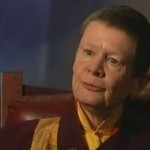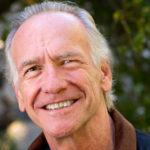by Mark Gittner: This project begins with some trepidation. As I read this book written by Dr. John Lilly, I found myself questioning the work of this man, this scientist.  The work of this man was either brilliant and on the verge of the future, or simply mad; possibly both. The Scientist A Metaphysical Autobiography begins with a notice stating this work is the “inner and outer experiences” of Dr. John Lilly, and may be considered autobiographical from that standpoint, but admits that taken from a “human-centered viewpoint” it may be thought of as fiction; an imaginary creation of the author. But it welcomes the open mind, the mind willing to accept the possibility of something more, nonfiction and the beginnings or a truth stranger than fiction.
The work of this man was either brilliant and on the verge of the future, or simply mad; possibly both. The Scientist A Metaphysical Autobiography begins with a notice stating this work is the “inner and outer experiences” of Dr. John Lilly, and may be considered autobiographical from that standpoint, but admits that taken from a “human-centered viewpoint” it may be thought of as fiction; an imaginary creation of the author. But it welcomes the open mind, the mind willing to accept the possibility of something more, nonfiction and the beginnings or a truth stranger than fiction.
To begin to describe Dr. John Lilly, it is interesting to note that the well known movie “Altered States” was based on the work of Lilly. The Scientist chronicles significant episodes from Lilly’s life beginning from his birth as a “being” that has chosen this particular human vessel to inhabit, ripped from the warmth of a womb into this world and set to suckle his warmth from his mothers breast. The being as a child was able to leave the body during sleep, to explore the planet and learn of ways to be as a human. We are given glimpses into his psychological appointments, and his subsequent psychoanalysis. All this is meant to give us a place to begin understanding the man, to reveal something of his motivations for his later work and research. Research- there is a substantial amount of this. Prompted by the early death of his brother as a child, Lilly vows to become a medical doctor. His Cal-Tech education introduced him to the similar biological beginnings to all animal life as an embryo, leading him to his interest in researching the brain. In addition, he reveals to his psychoanalyst several episodes through his life that he was aware of this “disassociation”, as he calls it, in himself, this being inside him that makes itself present while he experiences the trauma of a head injury in grade school, or under anesthesia for medical procedures. The “being” even has a chance to speak with the psychoanalyst. Through all this he maintains some connection to his catholic upbringing, which tends to color his thoughts in some ways, and is obvious through his later writings.
Later after teaching at Dartmouth and UPenn, he is swept up into research and treatment of mental disorders related to trauma from WWII. It is this research that leads him to his in depth studies of the brain and its deeper intricacies. He begins to master work using the electrode, eventually finding a balanced bidirectional pulse-pair of electroneuronal stimulus called the Lilly Wave, which caused no injury to the brain when used in experiments requiring brain stimulation. This work was published in 1955 under the title of “Brief, non-injurious waveform for stimulating the brain”, in Science journal. This discovery allowed him to do work mapping areas of the brain in monkeys that stimulate fear, anxiety, anger and pain, as well as the perceptions of pleasure and sexual arousal. Much of John Lilly’s work involving the mapping of the anatomy of the brain, including the areas governing perception, are well documented and awarded by the National Institute of Mental Health and the American Medical Authors. This concept is at least supported by Schiffman’s text, Sensations and Perception, which details many examples of physiological evidence supporting many sensory related theories, from the individual cells that fire for specific visual stimulus to the spinal gate control system which begins with nerve fibers and ends in the brain. His findings most likely enabled the research on the central control mechanism of the brain described in the text.
As a result of his brain work, he came under close scrutiny of the military, who invited research on human behavior modification, including that of “brainwashing”, and he subsequently began his research on the effects of isolation, due to methods various militaries used to make captives more compliant. He created a sensory deprivation unit called “The Lilly Tank”, in which an individual floated in a constant 94.5 F. degree salt-water environment contained within a sound-proof and light proof body thereby minimizing all sensory stimulation. His research made him aware that this had very little resemblance to the isolation tanks used by military units for captives. Most captives experienced periods of darkness and a lack of external auditory stimulation, but still had a floor to pace and a bed to feel providing stimulation. They typically endured periods of solitude contrasted by periods of physical extremes. Even this led to bouts of intense fear and paranoia and resulted in mental states that made men susceptible to suggestion.
However, the Lilly Tank was near total sensory deprivation. Conditions were, in his words, “the most even and monotonous environments” one can experience. The question he looked at was this: freed of the physical stimulation, or the normal efferent and afferent activities (some of which are described in Schiffmans text, Chapter on Perception of Movement), does the brain activity revert to sleep or coma state, or is there some inherent mechanism which keeps it going? The afferent signals are those sent to the brain in response to external stimulus, and the efferent signals those from the brain outward such as motor command signals in response to physical stimuli.
In the first few hours of his research, he was able to prove, er… find strong support for the theory that the brain contained self-sustaining oscillators and did not need external stimulation to stay conscious. It was, however, the additional data that was of far more interest to Lilly. In his report “Mental Effects of Reduction of Ordinary Levels of Physical Stimuli on Intact, Healthy Persons,” Psychiatric Reports, 1956, he reported several stages of tank experience. I shall list them as concisely as possible here:
- Residual awareness: of surroundings, the day’s residues, recent problems. (first hour)
- Relaxation period of restfulness and enjoyment at nothing to do. (end of first hour)
- “Stimulus Action” Hunger- self stimulation; muscle twitches, slow wimming movements, rubbing fingers, etc. (next hour) At this point tension may force participant to leave the tank.
- Hyper awareness: of oxygen mask, of suspension fluid- any lingering minimal stimulus becomes apparent to almost unbearable degree. Once passed, this stage leads to
- Fanticized thought: thought of problems changes to reveries or fantasies of a highly personal or emotionally charged nature, and vary from subject to subject. Reactions also vary from complete suppression to utter enjoyment.
- Projection of visual imagery: forms seen similar to those in hypnogogic states appear. Shapes with luminous borders. Tunnel with blue light directly ahead.
In the strictest sense, I define these as hallucinations, which involve perceptions in the absence of external stimulus. Notably, Schiffman’s text seems to avoid the topic of hallucinations, but I was able to distinguish Lilly’s experience from illusion which Schiffman covers and can be summed up as misinterpreted real perception resulting from external stimulus. Yes, I define this as hallucination, while Lilly himself, however, expounds upon beliefs he left out of the journal article. He talks of a“hole in the universe… to another reality. It scared me. I didn’t know about alternate realities at that time, but I was experiencing them right and left without any LSD.” This led to his discussion of the contained vs uncontained mind. If the mind was not strictly contained within the mind, than perhaps in a different state of consciousness, the mind could the perceive signals and communicate with others of like perceptions… i.e. the “being” contained within his body from before birth.
As experiments continue, Lilly chronicles several experiences with these beings, including a chapter entitle “Conference of Three Beings” which reveals them to be from some spaceless set of dimensions somewhere near the third planet of a small solar system dominated by a type-G star. The organization they represent he will eventually refer to as “Earth Coincidence Control Office” where they work through human agents to assist in the development of the human evolutionary process. Lilly himself is torn as to whether or not to term these as results of his imaginings or true perceptions of his mind as a result of his altered states. As he comes to terms with these findings, he wonders if this is evidence of a soul, and the beings as agents of the divine sort, and then his perceptions of extraterrestrial works upon the Earth, and of course, psychotic manifestations of his own mind. I must admit I am inclined to wonder about the third option myself.
He continued these experiments including LSD-25 for a while, until it was banned, then continued with a drug he referred to as Vitamin K, which my own research leads me to believe was ketamine hydrochloride. I remain skeptical of his conclusions, while reminding myself to keep an open mind, and recalling experiences of shamans and natives and mystics, all of which have shown things not yet explainable by modern science. If something has not yet found an explanation, chance are science hasn’t been advanced enough yet to explain it. I give it time.
He also made reference to finding that the subject is out of step with time for the rest of the day after immersion in the Lilly Tank. This suggests that protensity, or the perception of the passage of time, as Schiffman’s text defines it, is altered by a period of sensory deprivation. This suggests to me that much of the perception of time is dependent on environmental factors, and a significant disruption of environmental sensory input must significantly impair protensity, possibly due to top-down processes allowing the mind to mark the passage of time based off of learned durations of physical events. But that is purely speculation on my part. Much of what Lilly discussed about sensory deprivation was the first of its kind. There still is not a lot of study I was able to find regarding this in order to judge the accuracy of the effects he described.
However, the coolest stuff I read in the book had nothing to do, or very little to do, with Lilly’s sensory deprivation experiments. Possibly it involved the integration of sensory input. Dr. Lilly also did significant experiments with dolphin brain research and interspecies communication. I found his findings on the anatomy of dolphin brains to be fascinating. He describes the SILENT ASSOCIATION AREAS of the brain, which are the area believed to be the areas that integrate all the information received from various parts of the brain since they do not show sensory evoked responses (Spreen, et. al., 1995). Spreen also says that the silent areas allow for separation of higher order inputs, and permits a multitude of combinations of inputs, making a highly adaptive and plastic mechanism for information processing. Lilly found these areas to be proportionately larger in the bottlenose dolphin as the silent areas of humans are to the monkeys, and if, as he states in the Perspectives in Biol. & Med. Journal article “Critical brain size and language,” the absolute size of a mammalian brain determines it’s computing capability and the size of its storage, then the implications involving the thought processes of dolphins and whales are staggering. As the bottle nose dolphin grows and ages, its brain size eventually outstrips that of man, as does the whale. He discovered that the difference in the smaller brains of monkeys from large brained humans was mainly in the sizes of these silent areas. So, he hypothesizes that these dolphins and whales may have as good or even superior brain functioning to that of humans, and that we may have destroyed entire histories stored in the brains of the dolphin and whale, through hunting and environmental effects of industry. His research showed that dolphins were fully capable of controlling self-stimulation of pleasure centers the ways humans can, unlike monkeys who do not have this sort of discrimination. They also are able to access pleasure vocally, which monkeys are not capable of. When faced with stimulation of negative nerve centers of the brain, such as fear and anxiety, the dolphin does not panic, but is able to attempt to terminate such stimulation calmly. The documentation of dolphins playing games and enjoying physical contact is intriguing, and his assistant Margaret spent several years teaching English to dolphins, of which recordings can be found on Lilly’s website, WWW.johnclilly.com.
All in all, I am grateful I had the opportunity to read this autobiography, and while unsure of the reality of John C Lilly in total, I am sure of the competence and veracity of his work exposed in the “bubbles of consensus reality” (as Lilly describes it) in his book. I think I would like to read some more of Lilly and his work, and will do so in the future.





















































